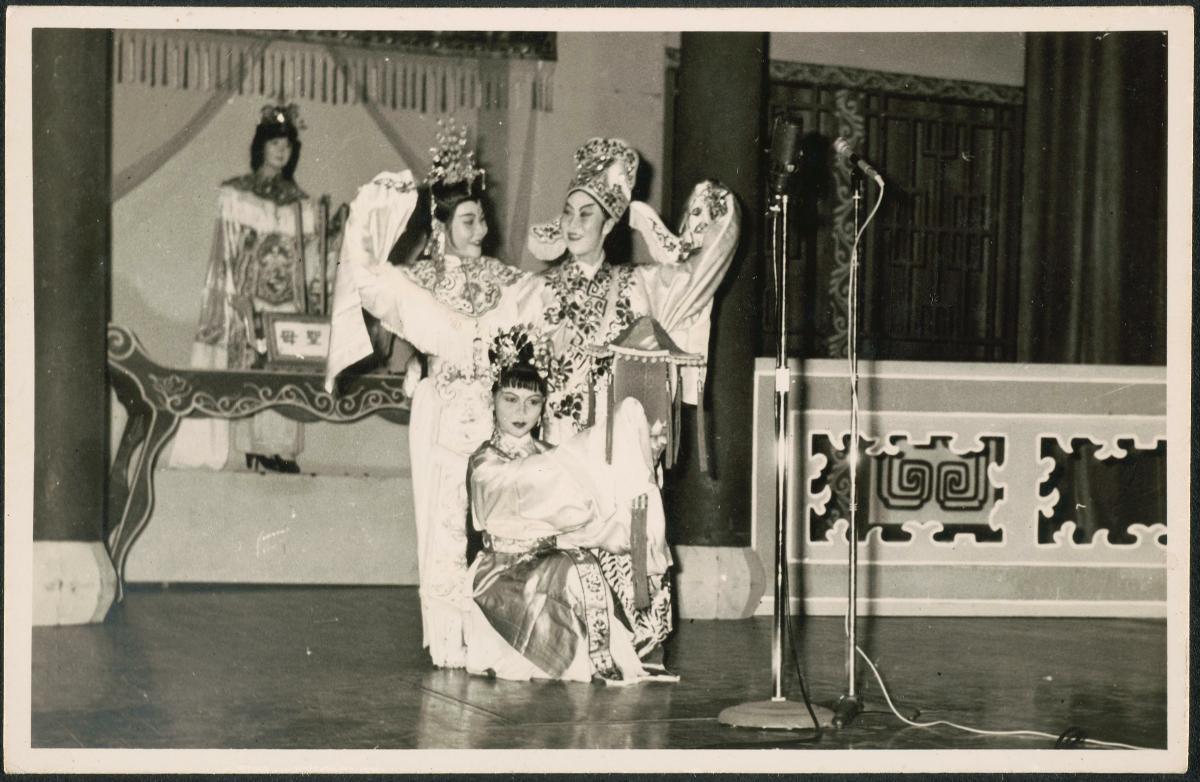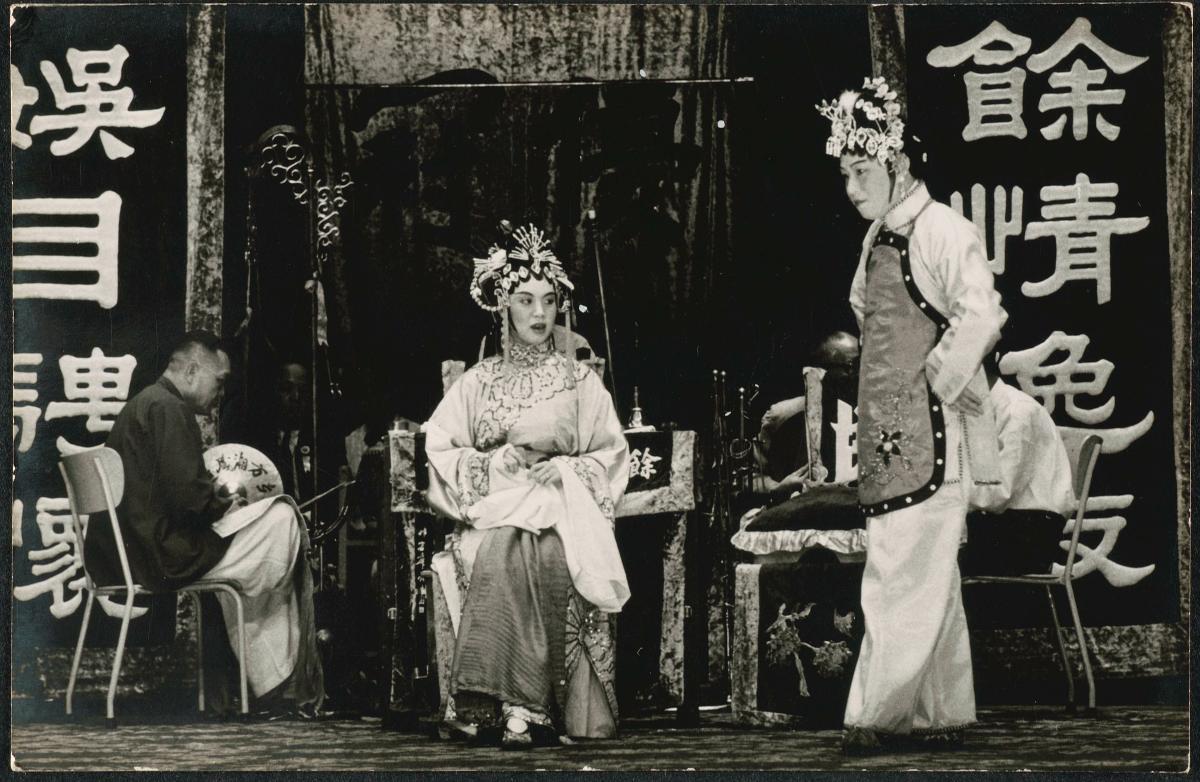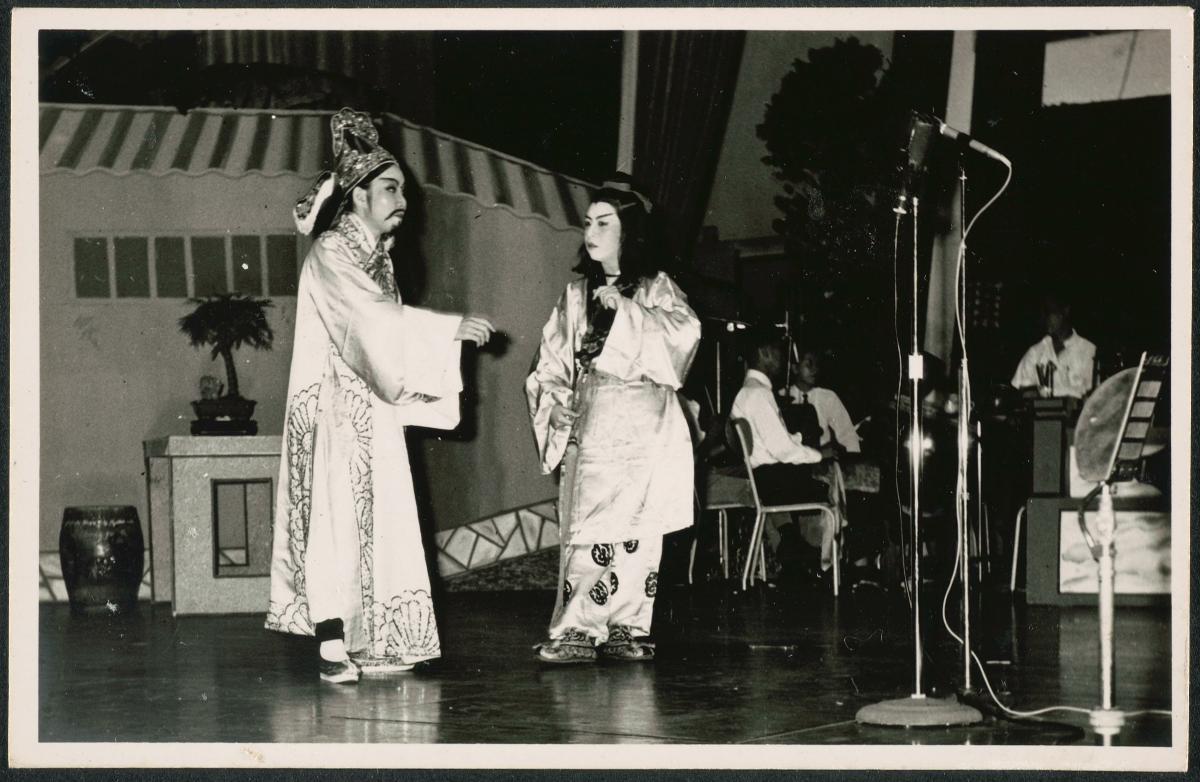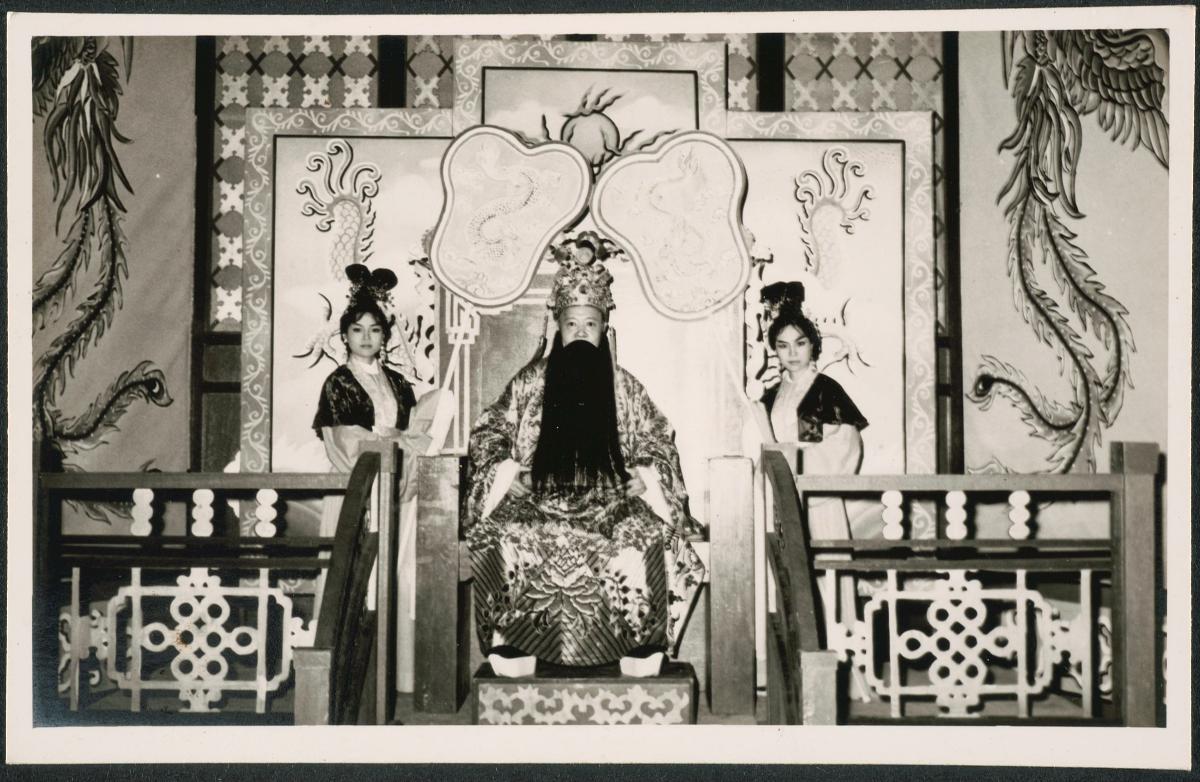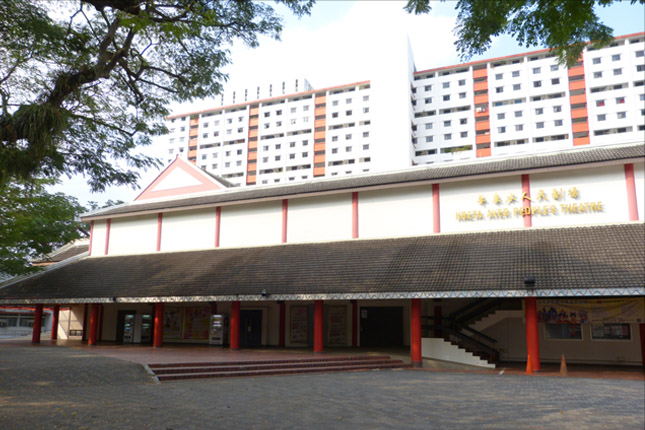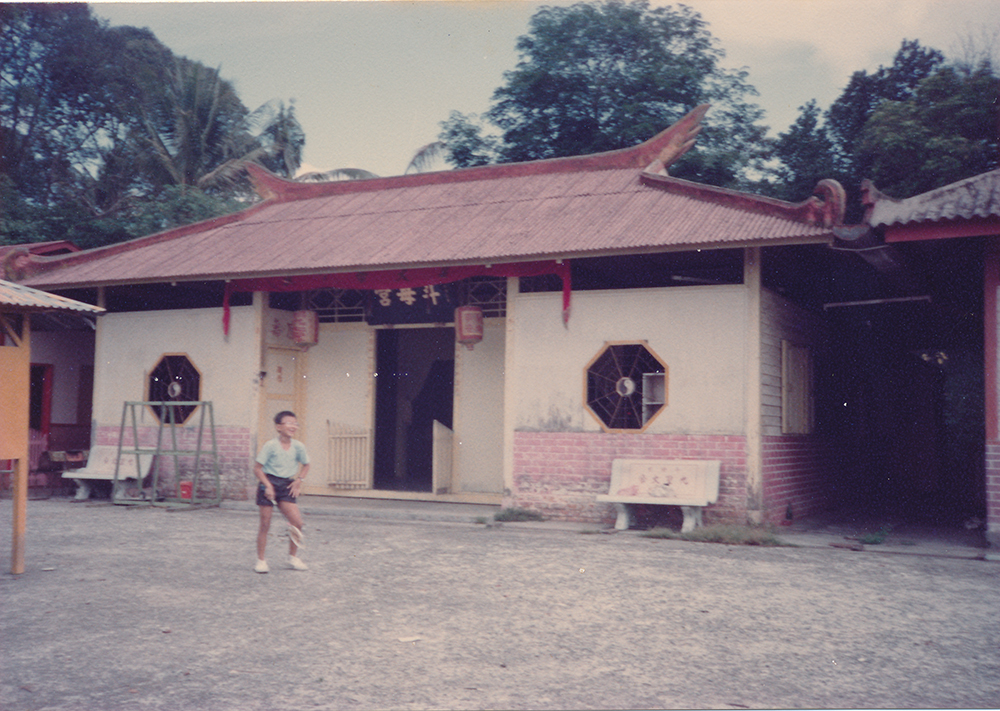Frame size: 9 x 13.8 cm
On the Chinese opera stage, actors often rely on stylised gestures to express a certain situation or event, as shown in this photograph. Chinese opera costumes, which have evolved over the centuries since the dynasties of Imperial China, are typically decorated with intricate designs and accessories that portray the age, traits and social status of the character. The headdress is also an important element of the Chinese opera costume. Adorned with sequins, pearls and other ornaments, the headdress helps to distinguish specific roles; the more important the character, the more elaborate the headdress. Known by the Malay term ‘wayang’, which means ‘performance’, Chinese opera in Singapore can be traced back to the 19th century with the arrival of Chinese immigrants. Up until the 1930s, wayang was a popular performing art, both as a platform for religious worship and as a cheap form of entertainment.




